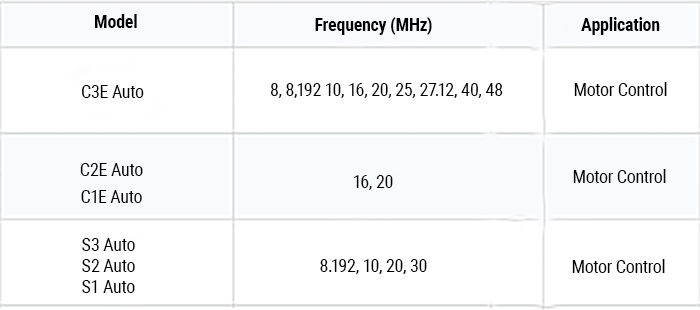The push towards electric vehicles (EVs) and autonomous driving technologies has stemmed from the progress in battery technology, enabling electric vehicles with the ability to improve fuel economy, lower fuel costs, and reduce emissions. As the electric vehicle industry continues to evolve, the need for reliable, high-performance frequency control products grows in tandem.
The integration of intelligent technologies and the widespread adoption of EVs has sparked a rising demand for advanced high-quality oscillators to meet the need for enhanced efficiency, durability, performance, and quality. A device that fulfills these requirements will earn an AEC-Q200 qualification.
At Aker, we provide AEC-Q200 qualified crystal oscillators (XOs), making them key frequency control products to manage the sophisticated electrical systems that power EVs. With the use of sensors to monitor voltage and current levels in battery packs, electric cars need highly accurate timing components to ensure efficient operation and reduce energy losses.

Crystal oscillators are used in many types of electrical vehicles including:
As the shift toward electric and connected vehicles accelerates, the demand for oscillators will grow, prompting manufacturers and suppliers to invest in cutting-edge technologies to ensure safety, performance, and market competitiveness.
Aker has had successful partnerships with renowned automotive companies. What truly sets us apart is our unwavering commitment to rigorous quality management. We are fully qualified under IATF 16949 and meet the AEC-Q200 testing standard, aligning with the industry’s highest benchmarks for quality, reliability, and consistency.
Whether you need a crucial component for an electric vehicle system, or a fully integrated module designed for ease of manufacturing, Aker has the technical expertise and vertical integration to provide unmatched solutions.
The following Aker crystal series meet the accuracy requirements for new energy vehicle controller and charger applications.

